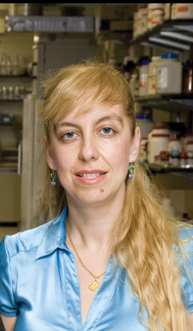Can radioimmunotherapy (RIT) be effective in helping to find a cure for the human immunodeficiency virus (HIV)? Researchers have used RIT to destroy remaining HIV-infected cells in the blood samples of patients treated with antiretroviral therapy, offering the promise of a strategy for curing HIV infection. Results of the research were presented Tuesday at the annual meeting of the Radiological Society of North America in Chicago.
Can radioimmunotherapy (RIT) be effective in helping to find a cure for the human immunodeficiency virus (HIV)? Researchers have used RIT to destroy remaining HIV-infected cells in the blood samples of patients treated with antiretroviral therapy, offering the promise of a strategy for curing HIV infection. Results of the research were presented Tuesday at the annual meeting of the Radiological Society of North America in Chicago.
What is known as highly active retroviral therapy (HAART) has brightened the outlook for patients infected with HIV by suppressing the replication of the virus in the body. Despite the success of HAART in effectively reducing the burden of HIV, however, scientists believe reservoirs of latently infected cells persist in the body, stalling the possibility of a permanent cure.

Is RIT the right method? In her study, Dr. Dadachova and a team of researchers administered RIT to blood samples from HIV patients treated with HAART. RIT, traditionally used in cancer treatment, uses monoclonal antibodies — cloned cells that are recruited by the immune system to identify and neutralize antigens. Antigens are foreign objects like bacteria and viruses that stimulate an immune response in the body. The antibody, designed to recognize and bind to a specific cell antigen, is paired with a radioactive isotope. When injected into a patient’s bloodstream, the lab-developed antibody travels to the target cell where the radiation is then delivered.
“In RIT, the antibodies bind to the infected cells and kill them by radiation,” Dr Dadachova said. “When HAART and RIT are used together, they kill the virus and infected cells, respectively.”
The researchers found that RIT was able to kill HIV-infected lymphocytes previously treated with HAART, reducing the HIV infection in blood samples to undetectable levels. “The elimination of HIV infected cells with RIT was profound and specific,” said Dr. Dadachova. “The radionuclide we used delivered radiation only to HIV-infected cells without damaging nearby cells.”
Clinical trials in HIV patients are the next step for the RIT treatment, said Dr. Dadachova.
Click here for more information about Siemens at RSNA: